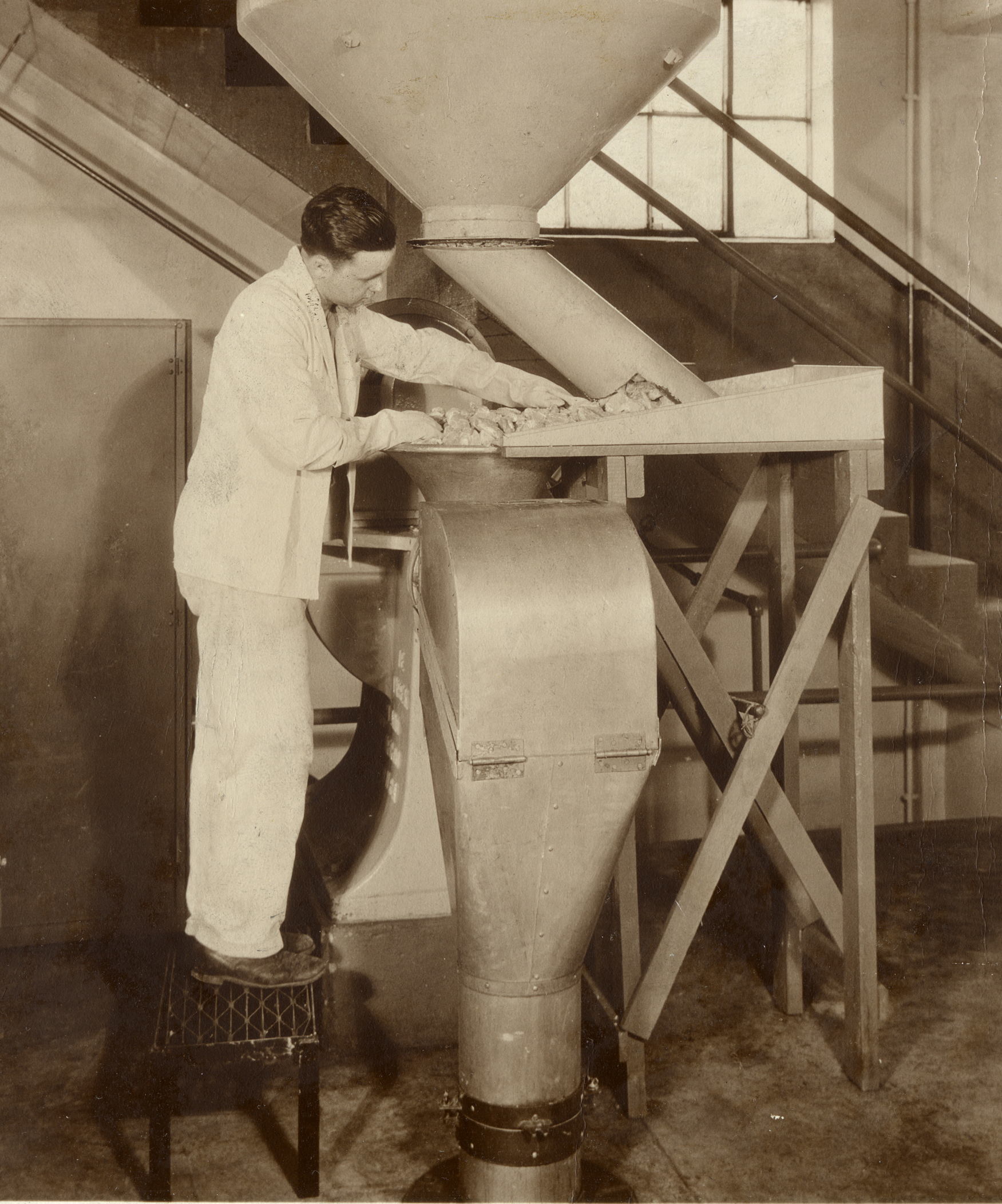With the discovery of insulin at the University of Toronto in the early 1920’s, followed by the establishment of commercial production, diabetes was no longer a death sentence. Insulin was not a cure, but when used properly and combined with constant monitoring of diet and blood sugar, diabetics could now live long and active lives.

|
| Grinding pancreases for insulin at Eli Lilly and Company, early 1930s. |
In 1922, the pharmaceutical company, Eli Lilly, was the first firm to commercially produce insulin. Scientists extracted and purified insulin found in the pancreases of pigs and cattle supplied by the slaughterhouses. The first insulins varied greatly in purity and strength. Manufacturers improved purification techniques, introduced standardized strengths and developed new long-acting insulins. Although not identical to human insulin, animal based insulins were a highly effective treatment.
The development of insulin therapy transformed diabetes from an acute, fatal disease to a chronic condition requiring life-long management. One consequence of this change was the creation of a growing population of people dependent on insulin. For reasons not entirely understood, changes in lifestyle and eating habits have also contributed to the number of Americans with diabetes. Together, these factors have resulted in an ever-expanding demand for insulin.
By the 1980s, concerns developed that the demand for insulin would out-strip the supply of animal organs. As luck would have it, new developments in biotechnology provided an alternate source for insulin. Recombinant DNA, a lab technique developed in the early 1970s, allowed pharmaceutical manufacturers to genetically engineer bacteria to produce human insulin. This “recombinant insulin” first came on the market in the mid-1980s, under the brand name Humulin.
After its release, Humulin quickly replaced traditional sources of insulin. Today, almost all insulin used in the United States is made by recombinant technique. For most insulin users, however, the change from animal based to human insulin made little difference to their daily routine.

